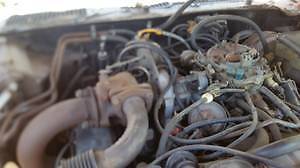1981 Pontiac Firebird Trans Am Turbo
- Price:
- Location: Sun City, California, United States
- Make: Pontiac
- Model: Firebird
- Type: Coupe
- Trim: turbo
- Year: 1981
- Mileage: 21,523
- VIN: 1G2AW87TXBL117964
- Color: Red
- Engine size: 301ci 200 hp
- Number of cylinders: 8
- Fuel: Gasoline
- Transmission: Automatic
- Drive type: RWD
- Interior color: Red
- Vehicle Title: Clear
1981 Pontiac Firebird Description
1981 Pontiac Firebird Trans Am TurboIn what could be best described as "deja vu all over again", General Motors announcedon September 25th, 2001, that the Firebird and Camaro models would cease after thirty- five years of production. The reason, people weren't buying the cars any more. They had outlived their usefullness within the corporate structure within GM. Never mind that GM had left these cars largely untouched since the current models 1993 debut - GM refused to remember the mistakes of the past and was repeating them again.
You may wonder how this corelates to the 1981 Trans Am? Think for a minute how old this car was; twelve models had been spawned from the shape that was laid down in the mid-to-late sixties. I know we had changed the appearance and powerteams throughout its production term, but deep down it was still had a cramped rear seat, it was thirsty in times of fuel shortages, and took up a lot of space outside for the space it allowed inside.
When the Firebird and Trans Am were selling in huge numbers and reaping enormous profits for GM, it was the darling of the industry. But when people slowed their buying because GM had milked the current design far beyond it's twilight, GM was always too late with a new car. Witness the 80 and 81 cars, the 91 and 92's, and finally the 1999-2002 versions. As great a car as all generations of Firebirds were, thier life cycles eventually were stretched too long and poor sales late in their product cycles were a result of corporate greed.
What a mouthful, huh? Well, for 1981, the Pontiac Firebird Trans Am entered it's thirtheenth year of production, the past twelve in the F-body that made its appearance as a '70 1/2 model. There were few changes made to the Trans Am for it's final year, most of which were of the continuing quality improvements and upgrading of standard equipment levels.
As had been witnessed with the 1980 offering, small displacement engines were the order of the day. The choices were the 4.9L T/A Pontiac V8, the Chevrolet 5.0L V8 andthe highly desirable 4.9L Turbocharged Pontiac V8. The big V8's were gone, never to return, but one performance icon from as far back as performance cars came from returned- The 4-Speed. The 4-speed was teamed up with only one engine, the Chevrolet 5.0L. This combination was teamed with a 3.08:1 rear axle ratio to deliver somewhat adequete performance for the day. While the Trans Am performance was now just a shell of it's former glory days, consider this; the Ford Mustang, once a worthy compettor, made do with a 255 cubic inch V8 of somewhere around 120 horsepower. Motor Trend magazine made their displeasure known when the subtitle to the road test of a 1981 Cobra was "Why bother with a V8 Mustang when it can't out run a Honda Civic".
The T/A 4.9L would stay in production until around April, after that, Pontiac would no longer be a source of V8 engines. With the introduction of the brand new third-generation T/A, only Chevrolet (later refered to as GM Corporate) engines would be found under the hood of Trans Ams. A 4-bbl carburetor still powered the 4.9L engine, but the only transmission available was still the automatic. Engine codes for the T/A 4.9 wereBDorBJ.
Horsepower ratings of the 4.9L Turbo engines dropped to a more realistic 200 horsepower. Last year's 210 hp rating seemed a bit optomistic, and the performance numbers seemed to support this. All turbos got the "boost gauge", the set of three lights in the hood bulge. Even at 200 hp, this would still be the highest horsepower rating for a Trans Am until the debut the Tuned Port engines in 1985. For the 4.9L turbo, there were two engine codes,BOorCJ.
The aforementioned Chevrolet 305 was an option, and after 1981, the Chevrolet (later "GM Corporate V8") would be the only offering in a Trans Am (excluding the limited run of Buick V6 turbo cars in 1989). The 305 V8 was coupled to a four-spped manual transmission and was finally available in California. Like the '79 and '80 models which preceded it, the chrome splitter tailpipes were replaced bu a pair of straight pipes, just like on the sister Camaro. 1981 engine ID's for the 305's wereDHJandDHZ.
The performance car market was once again in the same doldrums they survived with theintroduction of the catylitic converter in 1975. Performance had rebounded in the ensuing years, only to have ever tightening Federally mandated fuel economy minimums take it back. Pontiac was still trying. They still had the worlds only turbocharged V8 and they did reintroduce the manual transmission, but in comparison to the glory days, the Trans Am still came up a little short.
The Trans Am was not without the handling and styling flair that on which part of the marques reputaion had been built. The bespoilered 'Bird still looked better than most of it's competitors and the handling took a back seat to no one, regardless from which continent that auto originated. All Trans Am's were fitted with P225/70R-15 steel belted radial tires regardless of which suspension package was fitted. The base cars were equipped with either 7" wide steel Rallye II's or cast aluminum snowflakes. Those with the optional WS6 or WS7 (without rear disc brakes) suspension packages recieved the 8" wide snowflakes or turbo cast aluminum wheels. For some reason Pontiac decided 1981 would be the year to break tradition and not offer the Limited-slip rear differential as standard equipment.
All Trans Ams received GM's new "Computer Command Control", an early version of today's high tech computer controlled engine. GM oufitted the engines with sensors to measure engine temperature, engine speed, the throttle position, barometric pressure, and the oxygen content in the exhaust. The computer would then analyze the readings and adjust the air-to-fuel ratio to increase the effiency by not letting the engine run too rich, and also reducing emissions. A new, lighter weight Delco Freedom II battery rounded out the electrical package.
The color palate was as strong as ever with thirteen colors now available. The hood decal, was still bold, continuing to spit fire.
Special Edition Trans Ams were still around, wearing their black tuxedos set off with gold pinstriping and accents. Pricing for the Y84 package held fairly steady at $779 without and $1,516 with t-tops, only a $31 / $73 increase of the 1980 version. Continuingto climb however, was the base price which had lept to $8,322, a $842 increase over the 1980 version.
In keeping with a tradition established in 1979 with the 10th Anniversary model, theTrans Am featured a "NASCAR" edition. The paint scheme mirrored the previous '79/'80 style but was black over white. Inside there were some big changes. The Trans Am seats, which had been largley unchanged since 1971 were replaced with a set ofRecarobuckets. Red inserts in the seating area contrasted with the black bolsters and seatbacks. The rear seating area was finished in the same pattern. The Recaro's held the dirver and front seat passenger in place with seat design rather than upholstery selection. Finally,after ten-years of compaining, the Journalists and consumers received with the NASCAR edition what they had been asking for for years - a seat back adjuster.
All NASCAR Trans Ams were turbocharged and featured white turbo cast aluminum wheels. At the rear flanks, there were large "NASCAR" logos, with additional logos underneath the Trans Am decals on the fenders.
All in all, the second generation Trans Am had a pretty good run. After a rocky start, 458,462 were built during the twelve year run. Starting at 3,196 examples in 1970 to its 116,535 unit zenith in 1979, and ending 1981 production an additional 33,313 Trans Ams later, these numbers would have made any manufacturer happy. There are Trans Am clubs, entire industries, owners, and Police Officers, all whom recognize the important role the Trans Am played. There were movies (Smokey and the Bandit I & II). At selected race tracks, Pontiac even sponsored a big GMC Motorhome emblazoned "Trans Am Territory" for owners of Trans Am to park around and be catered to. During the period, the T/A was featured in many tire, shock absorber, wheel, and wax ads, some were even produced after the 2GTA's production run was over. Meetings, such as the Trans Am Club of America's "Trans Am Nationals" in Dayton, Ohio, which has celebrated it's 15th anniversary, routinely draws over 150 such examples.
The second generation Trans Am certainly made its mark as an automotive icon in the '70's and '80's. We saw the end of the big-block and the birth of new technology. We were there when the 455 Super Duty defied all corporate logic in the middle of a gas crunch to be recognized as one of the greatest production engines of all time. We witnessed the attempts by corporate decision makers to bring the T/A down, but the faithful merely cleaned the old 'bird up an let her soar.
With the offical death of the Firebird Trans Am when the 2002 production run ends, we are fortunate enough to have the memories of how it used to be. And you know how memories are - the pleasant ones just keep getting better and better.
Thank you for your time to read these series of articles,
Gary Lisk
| LU8 | 4.9 Liter (301 CID) 4BBL Turbo Engine w/Turbo Boost Gauge | Power Steering | |
| Windshield Reveal Molding - Black | Backlite - Black Molding | ||
| Bucket Seats | Floor Console | ||
| Column Mounted Dimmer Switch | Power Brakes | ||
| Front Disc Brakes | Kilometer/Miles per Hour Speedo | ||
| Concealed Windshield Wipers | Chrome Side-Splitter Tailpipe Extensions | ||
| Black Taillamp Lens | Front Center Air Dam & Front and Rear Wheel Opening Air Deflectors | ||
| Front Fender Air Extractors | 11L | Paint Exterior Lower - White | |
| 19U | Paint Exterior Upper - Black | 19I | Trim Interior Black |
| N81 | Computer Command Control | MX1 | Automatic Transmission |
| C60 | Air Conditioning, Custom | 199 | Seats Belts, Black |
| U17 | Gages Rally, Clock & Tachometer | CC1 | Hatch-Roof, Removable |
| D35 | Sport Mirrors, Sport LH Remote, RH Manual Convex | D34 | Mirror, Visor Vanity RH |
| D80 | Spoiler, Rear Deck | UM6 | Delco-GM Radio, AM/FM Stereo/Cassette-ETR |
| WS6 | Special Performance Package | NK3 | Steering Wheel, Formula |
| N89 | Wheels, Turbo Cast Aluminum | K73 | Alternator, Heavy Duty 70 Amps |
| B18 | Custom Trim Group, Velour | 18C | Trim Cloth Black |
| AR9 | Seat, Recaro Bucket | ||
| Base | 4.9L T/A | 5,087 |
| 5.0L | 2,686 | |
| 4.9L Turbo | 3,851 | |
| Base w/T-Tops | 4.9L T/A | 4,589 |
| 5.0L | 3,225 | |
| 4.9L Turbo | 6,612 | |
| SE w/o T-Top | 4.9L T/A | 41 |
| SE | 5.0L | 15 |
| SE | 4.9L Turbo | 65 |
| SE w/T-Tops | 4.9L T/A | 1,160 |
| 5.0L | 932 | |
| 4.9L Turbo | 3,050 | |
| NASCAR Edition | 4.9L Turbo | 2,000 |
| Total Trans Am | 33,313 |
| Custom Trim - Doeskin Vinyl | Custom Trim - Pimloco / Durand Cloth||||||
| White | 11 | Dark Blue | 26R | 26D | 26N | 26B |
| Silver (Met) | 16 | Black | 19R | 19N | 19B | |
| Black | 19 | Light Sandstone | 63B | |||
| Bright Blue (Met) | 20 | Medium Doeskin | 64R | 64D | 64N | 64B |
| Light Blue (Met) | 21 | Medium Red | 75R | 75N | 75B | |
| Dark Blue (Met) | 29 | Black/Red - NASCAR Edition only | 18B | |||
| Gold (Met) | 54 | |||||
| Yellow | 56 | |||||
| Orange (Met) | 57 | |||||
| Dark Brown (Met) | 67 | |||||
| Bright Red | 75 | |||||
| Dark Maroon (Met) | 77 | |||||
| Dark Charcoal (Met) | 84 |
| 5.0L 305 CID | LG4 | DHJ, DHZ145@3600240@2000
| 4.9L T/A 301 CID | L37 | BD, CJ150@3600245@2000
| 4.9L Turbo 301 CID | LU8 | BO, CJ200@3600340@2000
| 4-Spd Man | DC, FN | 2.56 | PH | PT |
| 3-Spd Auto | JC, JD, KY, MC | 3.08 | PC | PQ, PW |
| PE | PY |
I wish to thank the people atWeb Counterfor their counting service provided to me at no charge.
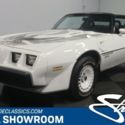 1981 Pontiac Firebird Trans Am Turbo Pace Car Coupe 301 Turbo V8 Automatic Class
1981 Pontiac Firebird Trans Am Turbo Pace Car Coupe 301 Turbo V8 Automatic Class
Mileage: 75916
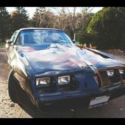 1981 Pontiac Trans Am Firebird Turbo
1981 Pontiac Trans Am Firebird Turbo
Mileage: 77511
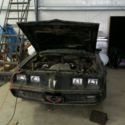 1981 PONTIAC FIREBIRD TRANS AM 4.9L TURBO
1981 PONTIAC FIREBIRD TRANS AM 4.9L TURBO
Mileage: 98,000
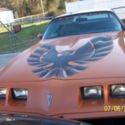 1981 Pontiac Firebird Trans Am T TOPS Turbo 4.9 LITER V 8 PONTIAC Sport Orange
1981 Pontiac Firebird Trans Am T TOPS Turbo 4.9 LITER V 8 PONTIAC Sport Orange
Mileage: 46,380
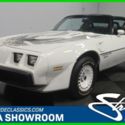 1981 Pontiac Firebird Trans Am Turbo Pace Car Coupe 1981 Trans Am Turbo Pace Car
1981 Pontiac Firebird Trans Am Turbo Pace Car Coupe 1981 Trans Am Turbo Pace Car
Mileage: 75916
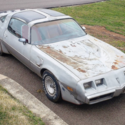 1981 Pontiac Firebird Trans Am Turbo Ws6 Package
1981 Pontiac Firebird Trans Am Turbo Ws6 Package
Mileage: 68000
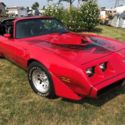 1981 Pontiac Firebird Trans Am V8 turbo Automatic
1981 Pontiac Firebird Trans Am V8 turbo Automatic
Mileage: 22,592
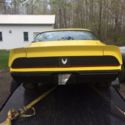 1981 Firebird Trans Am Turbo with 76 Front End 400 Pontiac Motor
1981 Firebird Trans Am Turbo with 76 Front End 400 Pontiac Motor
Mileage: 123,123
 1981 Pontiac Firebird Trans Am Turbo 52k original miles
1981 Pontiac Firebird Trans Am Turbo 52k original miles
Mileage: 52020
 1981 Pontiac Firebird Trans Am Turbo Pace Car Edition
1981 Pontiac Firebird Trans Am Turbo Pace Car Edition
Mileage: 53900







